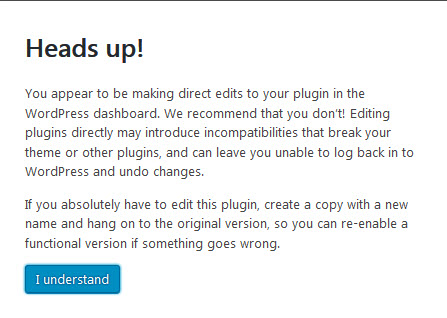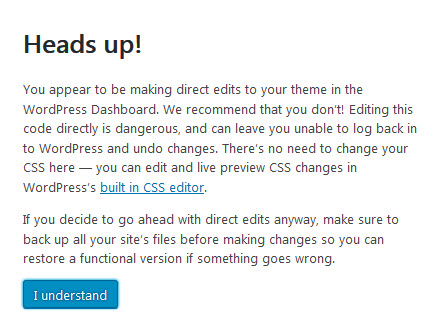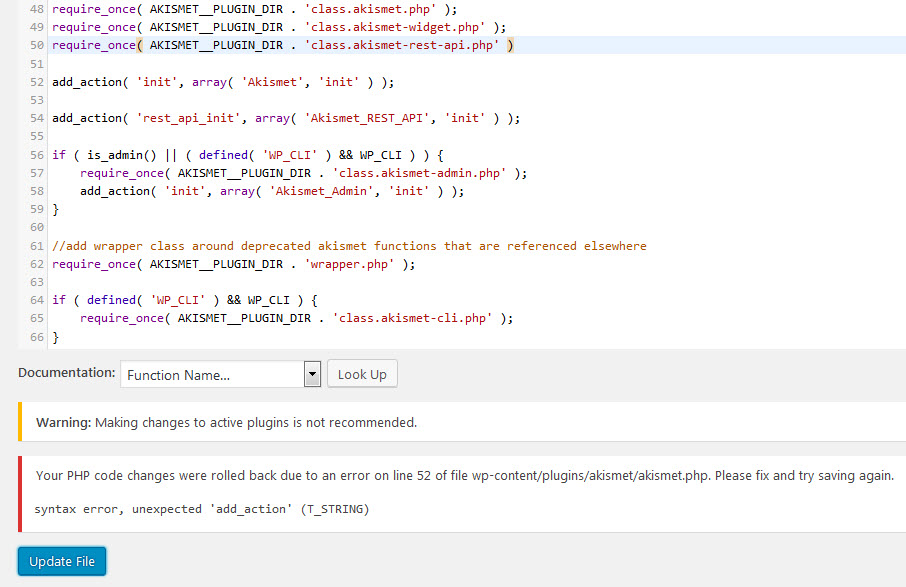Over the years, there have been many discussions and debates on whether or not WordPress should have a built-in file editor for themes and plugins. The file editors, while convenient, allow users to easily trigger fatal errors that can be difficult to fix, especially if they don’t have FTP access.
Instead of removing the editors from core, the WordPress development team has enhanced them by adding fatal error protection in WordPress 4.9. When a user accesses the theme or plugin editor for the first time, they’re presented with the following warnings. The warnings are a result of a three-year-old trac ticket.


If you try to save changes to a file and WordPress detects a fatal error, the change is not saved and a warning message is displayed that explains where the error occurred. Although the changes are rolled back, the code in the editor is not replaced with the original. To replace the code, simply refresh the browser tab.

In addition to safety features, the code editors are powered by CodeMirror, an open-source, JavaScript powered text editor that adds features such as line numbers. The plugin editor includes the ability to look up documentation for filters, hooks, and actions with many of the links pointing to the new WordPress Developers Resource site.
Even with the addition of CodeMirror in core, the file editors in WordPress are not a replacement for an integrated development environment. However, the warnings and fatal error protection are huge improvements that will prevent many users from creating a White Screen of Death situation on their sites.
This is awesome. Cowboy / cowgirl coders will always exist. This change appears to be an elegant solution to an age-old WordPress problem. Should relieve some pain for people whose clients get a little too eager to make their own technical changes.